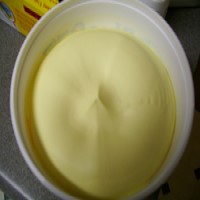
The Oleomargarine Act required prominent labeling of colored oleomargarine, to distinguish it from butter
In 1950, the Oleomargarine Act required prominent labeling of colored oleomargarine, to distinguish it from butter. In 1886, the first Oleomargarine Act which defined the essence of butter and imposed a two-cent per pound tax on oleomargarine, a butter substitute made from animal fat. The political clout of the dairy industry led to laws imposing prohibitions and limitations on the competing margarine product that remain in effect today.
Tags:
Source: Coriell Institute for Medical Research
Credit:
